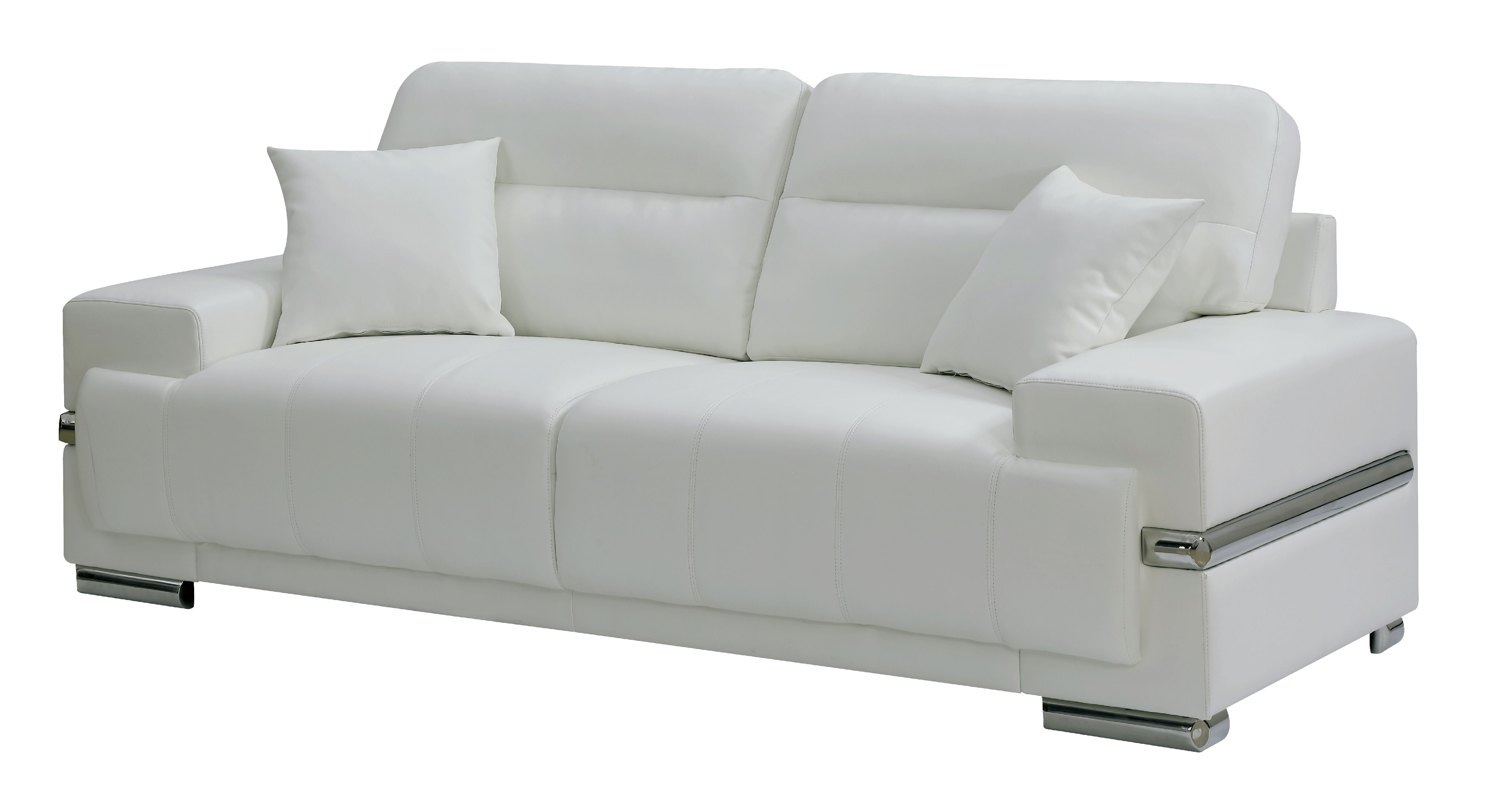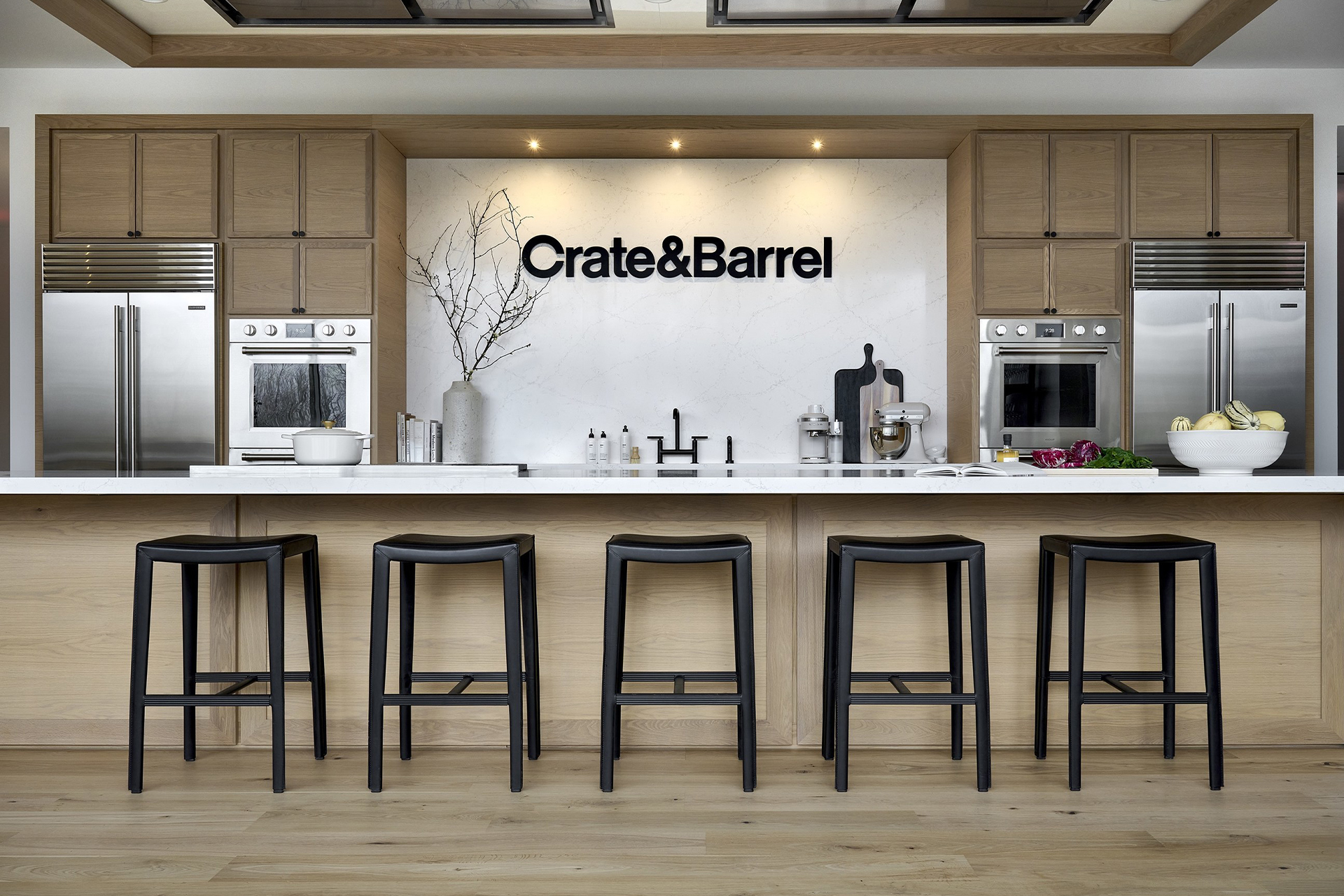When designing your kitchen, the first and foremost goal to consider is creating a cozy, comfortable atmosphere. You want a space that stimulates conversation and where friends and family feel like they can openly converse and relax. Use warm colors and intricate patterns to achieve this, as they often help to foster a more welcoming environment. It’s a good idea to add a few signature design elements like an eye-catching chandelier or an intricately carved backsplash. The best way to ensure coziness and friendliness in a room is to spread out the seating. Having more than one gathering space can make the kitchen look divided, but if done well, this can be incorporated to good effect. Put a couple of barstools along the counter, space out some comfy armchairs or beanbags around a dining table, or even a pair of sofas for extended family get-togethers.Creating a Cozy and Sociable Kitchen Space
Lighting can make or break any room design, so make sure to pay careful attention to it when working on your emotional kitchen design. First, ensure that you have adequate brightness throughout, so that food preparation and any other tasks can be completed with confidence. For the evenings, it’s a good idea to choose dimmers and low-hanging recessed lighting as these set the perfect atmosphere for having dinner or socializing. You can also get creative and install different colors of lighting in several parts of your kitchen. Instead of going for plain white bulbs, why not try yellow for a more warm and inviting feel, or blue for a cold, calming effect? Alternatively, you could purchase specialty bulbs with several colors to help create a calm, unique experience. Integrating Mood Lighting
Colors can have a huge effect on your mood, as they can evoke quite different reactions from people. For example, a kitchen with warm colors such as reds, oranges, and yellows can bring out a cheerier, more energetic atmosphere, while blues and greens can make a space calmer and more soothing. Take time to think about the emotions you want to evoke in your kitchen design, and then select the right colors for the job. Opt for either a predominant color scheme or create a mix of colors, just remember to stay within complimentary shades so that the room doesn’t feel too jarring.Incorporating Color Psychology
One of the best ways to make your kitchen a place of conversation and community is to add seating or gathering spaces. Think about what kind of environment you want your kitchen to have—do you want it to be a warm, cozy space for family get-togethers or an inviting and modern place for entertaining guests? Design accordingly. If you want to evoke a sense of warmth and familiarity, try opting for wooden chairs and benches in a neutral color, such as brown or gray. On the other hand, if you’re looking for a more modern look, try incorporating sleek accents such as breakfast bars or high stools. Adding Seating or Gathering Spaces
When considering your emotional kitchen design, storage is a major factor. When it comes to kitchen design, the look and feel of your cabinets, shelves, and drawers can make or break the overall look. Your cabinets should not only be practical but also aesthetically pleasing as they are usually the first thing people notice when entering your kitchen. openness when you’re designing. Open shelving can help to visually expand the room, making it look larger and more inviting. This isn’t a one-size-fits-all solution, however, as it depends heavily on the material and how it’s arranged. Consider using a combination of shelves, drawers, and cabinets to achieve your desired look. Consider Your Storage Options
When planning out your emotional kitchen design, experiment with different materials, textures, and finishes. This can help to add a custom touch to the design and make the kitchen stand out. Opt for metal or wooden accents: a metal oven hood or a wooden countertop, for example. You can also get creative with backsplash tiles, incorporating vibrantly colored tiles or textured pieces to break up the routine. There are plenty of options to choose from, so make sure to find the best one that speaks to your style. Getting Creative with Materials
The most important part of any kitchen design is expressing yourself. Get creative and come up with something unique and interesting. Incorporate vibrant colors that help to bring the space to life and add small accessories that make the kitchen feel like a home. You could choose an eye-catching wallpaper or hang some fun artwork to spice up the walls. For a fun, unexpected twist, why not incorporate something fun and whimsical into the design. This could include a cool wallpaper, a bright countertop, or even a fun backsplash.
Be Unique and Fun
When working on your emotional kitchen design, consider including open spaces. Make sure that there is a reason for each piece of furniture, shelving, and storage, and don’t forget to leave space between them. Creating a clear workflow space will guarantee that the kitchen looks larger and more welcoming. Adding shelves, wall-mounted hooks, or other pieces of furniture can help to open up the space and make it look bigger. However, too much open space can also look bland, so try adding some vibrant colors or strategic landscape lighting to liven up the area. Focusing on Open Space
Sometimes, it’s best to hire a design professional who can help to come up with the best solutions for your kitchen design. Professionals have an eye for detail that most of us don’t have, so they can help to make the choose the best combinations and provide suggestions that you may not have thought of! Professional designers also have the skill and experience to help ensure that your kitchen is designed in such a way that it fits with your lifestyle. They can help you identify areas that need improvement and come up with creative solutions to meet your needs. Working with a Design Professional
Your emotional kitchen design should radiate the feelings you want to evoke, whether it’s comfort, warmth, relaxation, or energy. Think about the emotions you want to create and consider the colors, patterns, and materials that can help make the atmosphere you desire. Remember to have fun with the design of your kitchen and don’t be afraid to get creative with it! There are plenty of options for you to choose from – from contemporary and traditional designs to more unique, eclectic styles – so explore what’s out there and find the one that best expresses who you are! Incorporating Your PRIMARY Emotional Kitchen Design
How to Get Started with an Emotional Kitchen Design
 When it comes to kitchen design, the goal is to create a space that is
relaxing and inviting
. It’s an area in the home where family members and guests can sit down and share a meal, and it therefore pays to make sure the kitchen has an
atmosphere that is warm and welcoming
. An emotional kitchen design typically involves incorporating elements that promote a
calming, stress-free experience
while also ensuring the design makes the best use of the space available.
When it comes to kitchen design, the goal is to create a space that is
relaxing and inviting
. It’s an area in the home where family members and guests can sit down and share a meal, and it therefore pays to make sure the kitchen has an
atmosphere that is warm and welcoming
. An emotional kitchen design typically involves incorporating elements that promote a
calming, stress-free experience
while also ensuring the design makes the best use of the space available.
Incorporating Color
 The use of
color has a great impact on how guests will perceive the atmosphere
. For instance, consider incorporating light, airy colors such as blues and greens which can help to create the appearance of a larger space. In addition, warm hues such as yellows and oranges can help to facilitate conversations, while neutral tones such as whites and greys can give the feel of a
more contemporary look
.
The use of
color has a great impact on how guests will perceive the atmosphere
. For instance, consider incorporating light, airy colors such as blues and greens which can help to create the appearance of a larger space. In addition, warm hues such as yellows and oranges can help to facilitate conversations, while neutral tones such as whites and greys can give the feel of a
more contemporary look
.
Reflecting Personal Style
 It is important for the kitchen design to
reflect the personal style of the homeowner
. This may include incorporating furniture that was made by the homeowner or antiques that have sentimental value. To form a look that is unique, collages of family photos, canvas wall art, and wallpapers can be used. Additionally, fresh flowers, greenery, and colorful dishware can go a long way in adding a
personal touch
.
It is important for the kitchen design to
reflect the personal style of the homeowner
. This may include incorporating furniture that was made by the homeowner or antiques that have sentimental value. To form a look that is unique, collages of family photos, canvas wall art, and wallpapers can be used. Additionally, fresh flowers, greenery, and colorful dishware can go a long way in adding a
personal touch
.
Maximizing Available Space
 The layout of the kitchen is an important factor when designing it for an emotional experience. Incorporating functional pieces such as storage shelving and cabinets can help to maximize the space, while also giving it a
neat and organized
look. Additionally, kitchen islands can be used to provide additional counter space and seating, and some homeowners may choose to add stainless steel pieces to create the look of an upscale kitchen.
The layout of the kitchen is an important factor when designing it for an emotional experience. Incorporating functional pieces such as storage shelving and cabinets can help to maximize the space, while also giving it a
neat and organized
look. Additionally, kitchen islands can be used to provide additional counter space and seating, and some homeowners may choose to add stainless steel pieces to create the look of an upscale kitchen.
Creating an Inviting Room
 Aside from the aesthetics, it is important to include items that make the kitchen an inviting room. This may include scented candles for subtle aromas. Incorporating accent rugs and pillows are great ways to make the kitchen more pleasant and comfortable. Additionally, the room could be filled with natural light by adding windows or French doors. This could also help to create the impression of a
larger space
.
Aside from the aesthetics, it is important to include items that make the kitchen an inviting room. This may include scented candles for subtle aromas. Incorporating accent rugs and pillows are great ways to make the kitchen more pleasant and comfortable. Additionally, the room could be filled with natural light by adding windows or French doors. This could also help to create the impression of a
larger space
.































































































